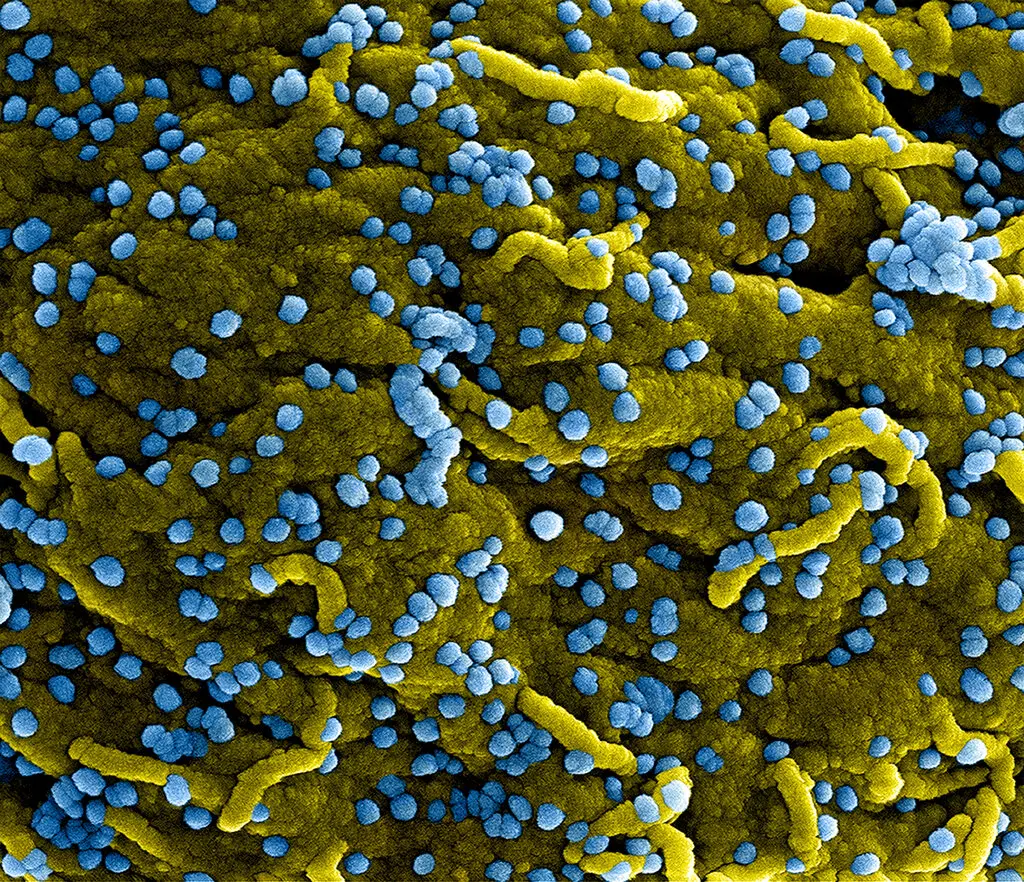Rwanda is currently experiencing a deadly outbreak of Marburg virus disease, a rare but highly fatal illness. So far, 11 lives have been claimed, with 36 confirmed cases across the country. The virus, which causes severe hemorrhagic fever, is comparable to Ebola in terms of symptoms and spread. This is the first time the disease has been detected in Rwanda, a country located in east-central Africa.
The outbreak has also raised concerns beyond Rwanda’s borders, with two individuals in Germany undergoing testing after one had direct contact with a Marburg patient in Rwanda. Thankfully, both tests came back negative. As health authorities around the world monitor the situation, it is essential to understand the Marburg virus and the current outbreak.
What is the Marburg Virus?
The Marburg virus is a pathogen responsible for Marburg virus disease (MVD), a type of viral hemorrhagic fever. First identified in 1967, the virus was initially detected in laboratory workers in the German cities of Marburg and Frankfurt, as well as in Belgrade, Serbia (formerly part of Yugoslavia). These cases were linked to African green monkeys imported from Uganda, which harbored the virus.
The disease has since emerged in several African nations, including Angola, the Democratic Republic of Congo, Kenya, Uganda, Ghana, and South Africa. It shares many similarities with Ebola in its progression, symptoms, and high fatality rate. While Marburg outbreaks have been sporadic, the virus remains a serious health threat due to its potential for significant mortality and lack of approved vaccines or antiviral treatments.
Marburg Virus Symptoms
Marburg virus disease is a severe illness that begins abruptly, with symptoms manifesting between two and 21 days after exposure. Early signs often include:
- High fever
- Intense headache
- Extreme fatigue and malaise
As the disease progresses, other symptoms can develop, such as:
- Muscle pain
- Diarrhea, often severe
- Nausea and vomiting
- Abdominal pain
One of the most alarming symptoms is the bleeding associated with Marburg virus disease, which can occur from multiple areas of the body, including the nose, gums, and through vomit or feces. The disease interferes with the body’s ability to clot blood, leading to internal and external hemorrhaging.
Patients who become severely ill usually die within eight to nine days after the onset of symptoms, often due to shock or severe blood loss. The World Health Organization (WHO) notes that Marburg virus is not contagious during the incubation period, meaning it does not spread until symptoms appear.

The Fatality Rate of Marburg Virus
One of the most concerning aspects of Marburg virus disease is its high mortality rate. According to the WHO, the case fatality rate (CFR) can range from 24% to as high as 88%, depending on the strain of the virus and the quality of medical care provided. In some instances, outbreaks have resulted in nearly complete mortality for those infected.
Dr. John Amuasi, a leading expert on global health and infectious diseases at the Kumasi Center for Collaborative Research in Tropical Medicine, highlighted the severity of the illness, stating: “Mortality is very high, and there’s no asymptomatic Marburg.” This means that all individuals infected with the virus will experience symptoms, which often progress rapidly and can lead to death if not managed appropriately.

How is Marburg Virus Disease Diagnosed?
Diagnosis of Marburg virus disease requires laboratory testing. Health organizations recommend several types of tests to confirm the virus, including:
- Antibody detection tests
- Antigen detection tests
- Polymerase chain reaction (PCR) tests
These diagnostic tools are essential in identifying cases quickly, isolating patients, and preventing further spread. Early detection can also improve a patient’s chances of survival, as treatment focuses on managing symptoms and providing supportive care, such as rehydration and addressing electrolyte imbalances.
The Ongoing Marburg Outbreak in Rwanda
Rwanda’s Ministry of Health declared an outbreak of Marburg virus disease on September 27, 2024. The virus was first detected in patients in health facilities, and the number of confirmed cases has since risen to 36, with 11 deaths reported. Cases have been found in several districts across the country, prompting health authorities to take swift action to contain the outbreak.
The source of the virus remains unclear, and efforts to trace contacts and isolate infected individuals are ongoing. The Rwandan government has also announced plans to begin clinical trials and explore experimental vaccines and treatments, which are currently in the final stages of research. Health Minister Sabin Nsanzimana expressed optimism about these developments, stating: “This is part of our efforts to help people recover quickly by utilizing vaccines and medicines specifically developed to fight this outbreak.”
Despite these measures, there is growing concern about the potential spread of Marburg to Rwanda’s capital, Kigali, due to the presence of an international airport. The World Health Organization has warned that cases in the capital could increase the risk of the virus spreading to other countries.
International Response: Cases in Germany and Risk to the U.S.
While the outbreak remains contained within Rwanda, there has already been a scare in Europe. Two individuals in Hamburg, Germany, including a medical student who had been in contact with a Marburg patient during his studies in Rwanda, reported feeling ill and were tested for the virus. Both tested negative, with German authorities assuring the public that there was no risk of transmission.
The student and his companion underwent PCR testing, the most accurate method for detecting the virus. As a precaution, the student will remain in isolation for 21 days, the maximum incubation period for the virus.
In the United States, the Centers for Disease Control and Prevention (CDC) has issued a Level 2 travel advisory for Rwanda, urging travelers to exercise enhanced precautions. This advisory recommends avoiding nonessential travel to areas affected by the outbreak, staying away from caves where bats are present (as bats are a known carrier of the Marburg virus), and avoiding contact with bodily fluids.
The CDC also emphasized that the risk of the virus spreading to the U.S. remains low. No cases of Marburg have been reported in the U.S. as a result of the current outbreak in Rwanda, and the agency is closely monitoring the situation.

How Does This Outbreak Compare to Previous Marburg Outbreaks?
The Marburg outbreak in Rwanda is still in its early stages but has already become one of the more significant occurrences in recent years. In 2023, Equatorial Guinea saw 17 confirmed cases and 23 probable cases, with 12 confirmed deaths. Tanzania also reported an outbreak in 2023, with nine confirmed cases and six deaths. Ghana declared an outbreak in 2022, which resulted in two deaths out of three confirmed cases.
Historically, larger outbreaks have occurred in Angola, where more than 200 people died from the virus between 2004 and 2005, and in the Democratic Republic of Congo, which saw over 100 deaths from 1998 to 2000.
Preventing Marburg Virus Disease
Without an approved vaccine or antiviral treatment, preventing the spread of Marburg virus disease relies heavily on public health measures. Isolation of infected patients is essential to contain the outbreak. Medical professionals caring for Marburg patients must use stringent infection control practices, including the use of personal protective equipment (PPE).
Individuals in outbreak areas should avoid contact with infected individuals and their bodily fluids, refrain from visiting traditional healers who may use unsterilized tools, and avoid areas where bats are known to live, such as caves and mines. Public health organizations also recommend raising awareness about the disease and its symptoms to ensure early detection and treatment.

Conclusion
The ongoing outbreak of Marburg virus disease in Rwanda highlights the significant threat posed by this rare but deadly virus. With a high fatality rate and no available vaccines or treatments, the disease requires swift and coordinated responses from health authorities to contain its spread. Rwanda’s health officials are working diligently to isolate infected individuals and explore experimental treatments, while international organizations like the WHO and CDC continue to monitor the situation closely.
While the risk of transmission outside of Rwanda remains low, travelers and residents in affected areas must take precautions to protect themselves. Increased vigilance and prompt medical intervention are crucial to preventing the further spread of Marburg virus disease and minimizing the loss of life.
